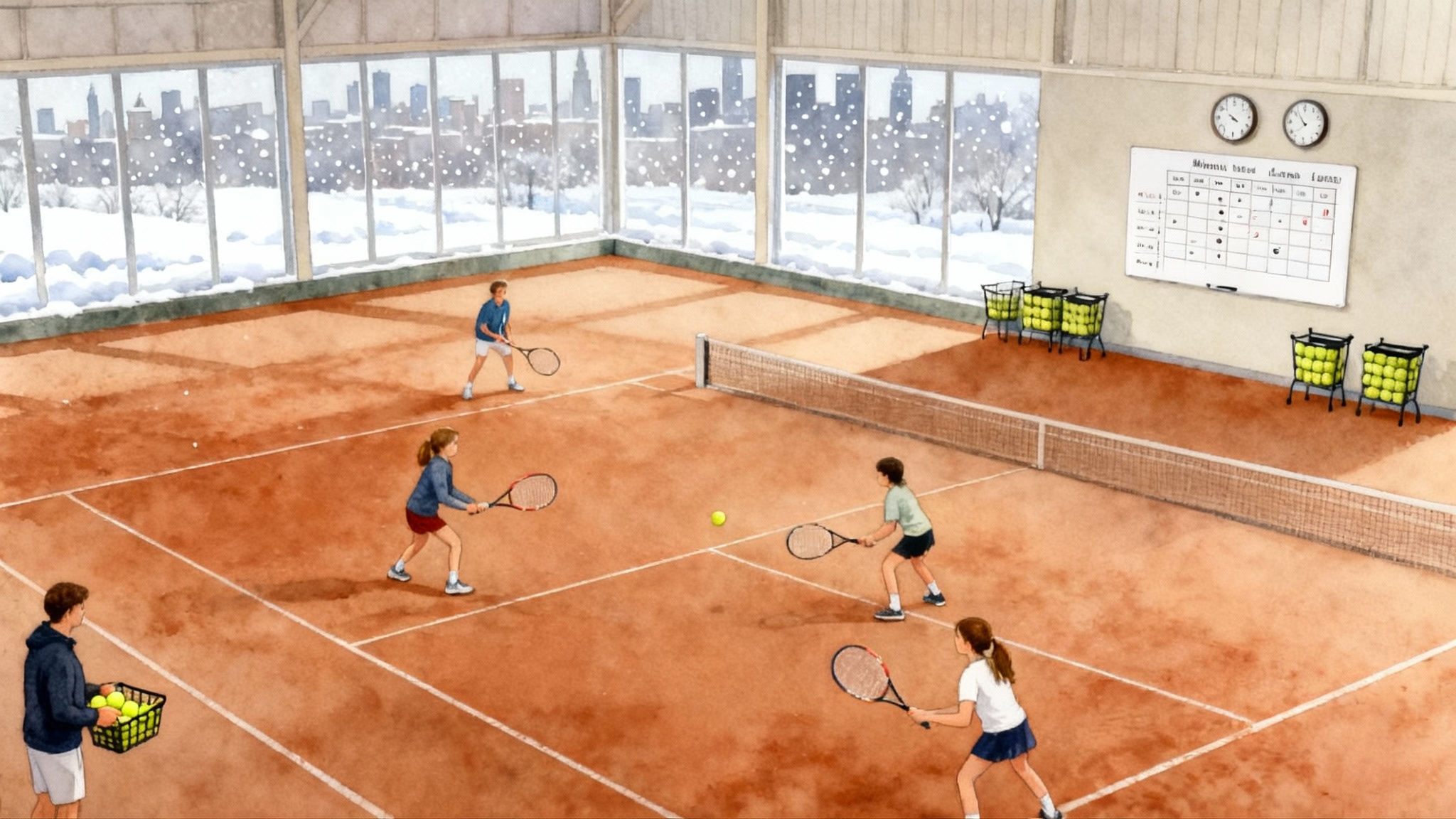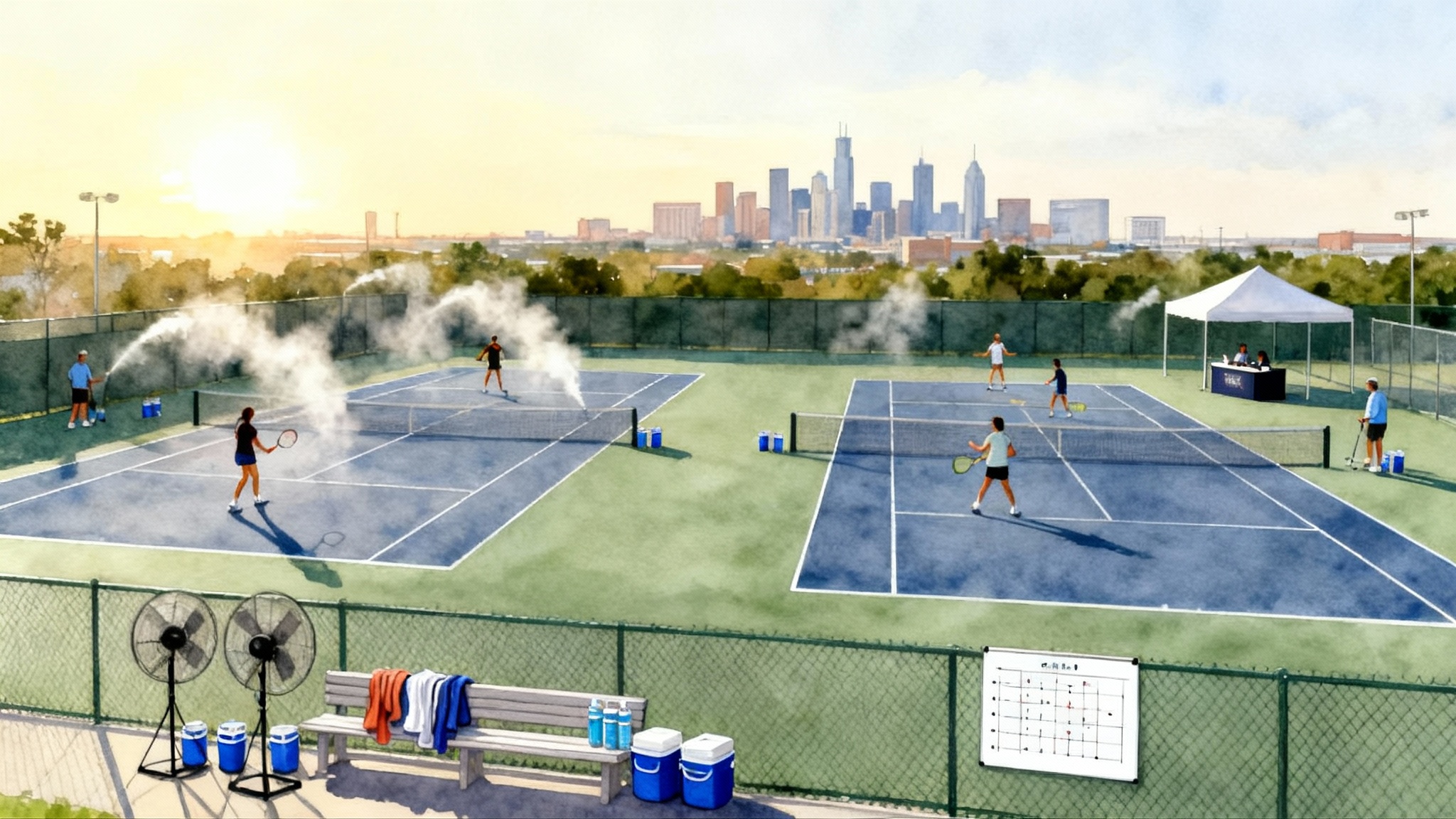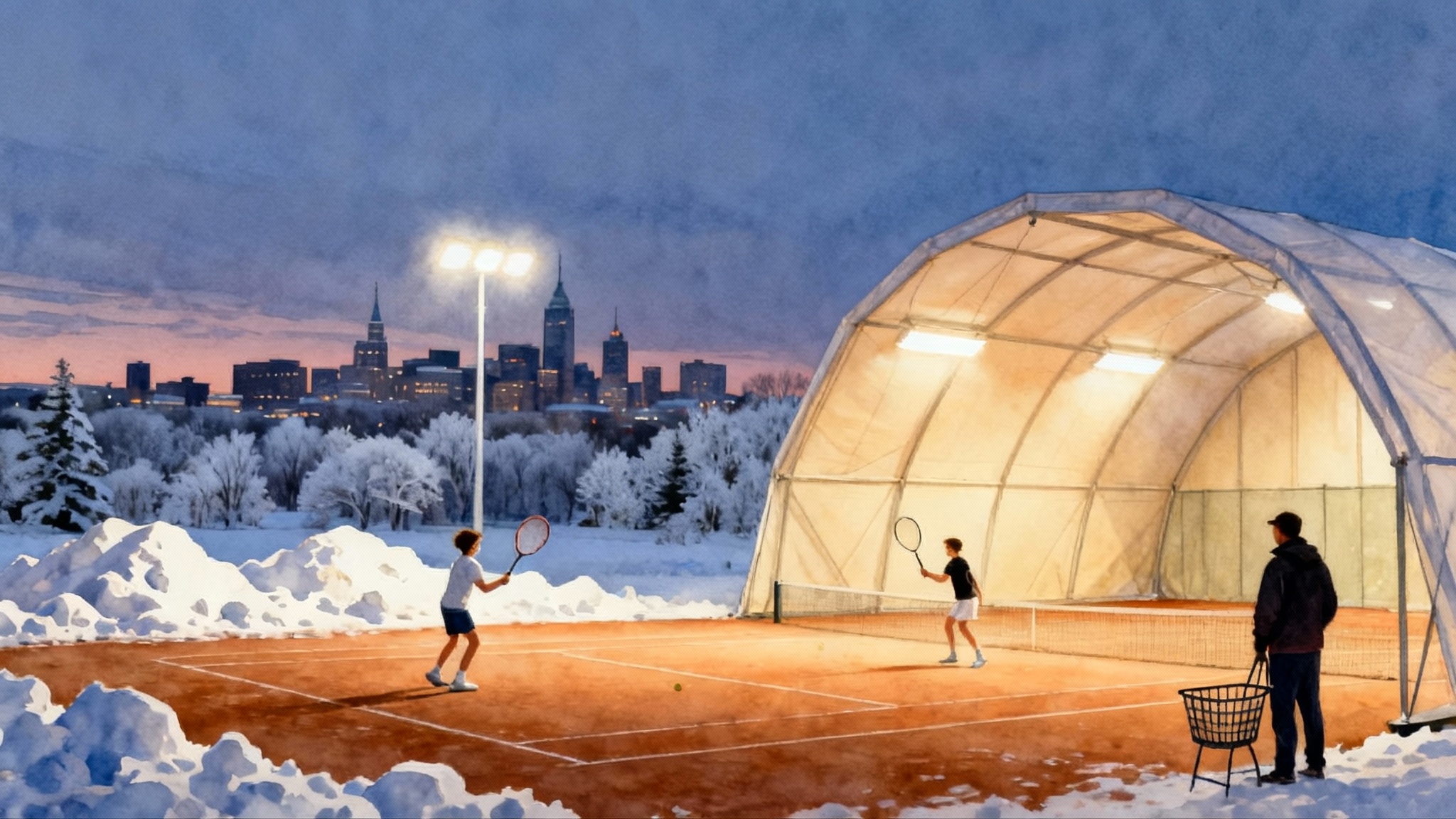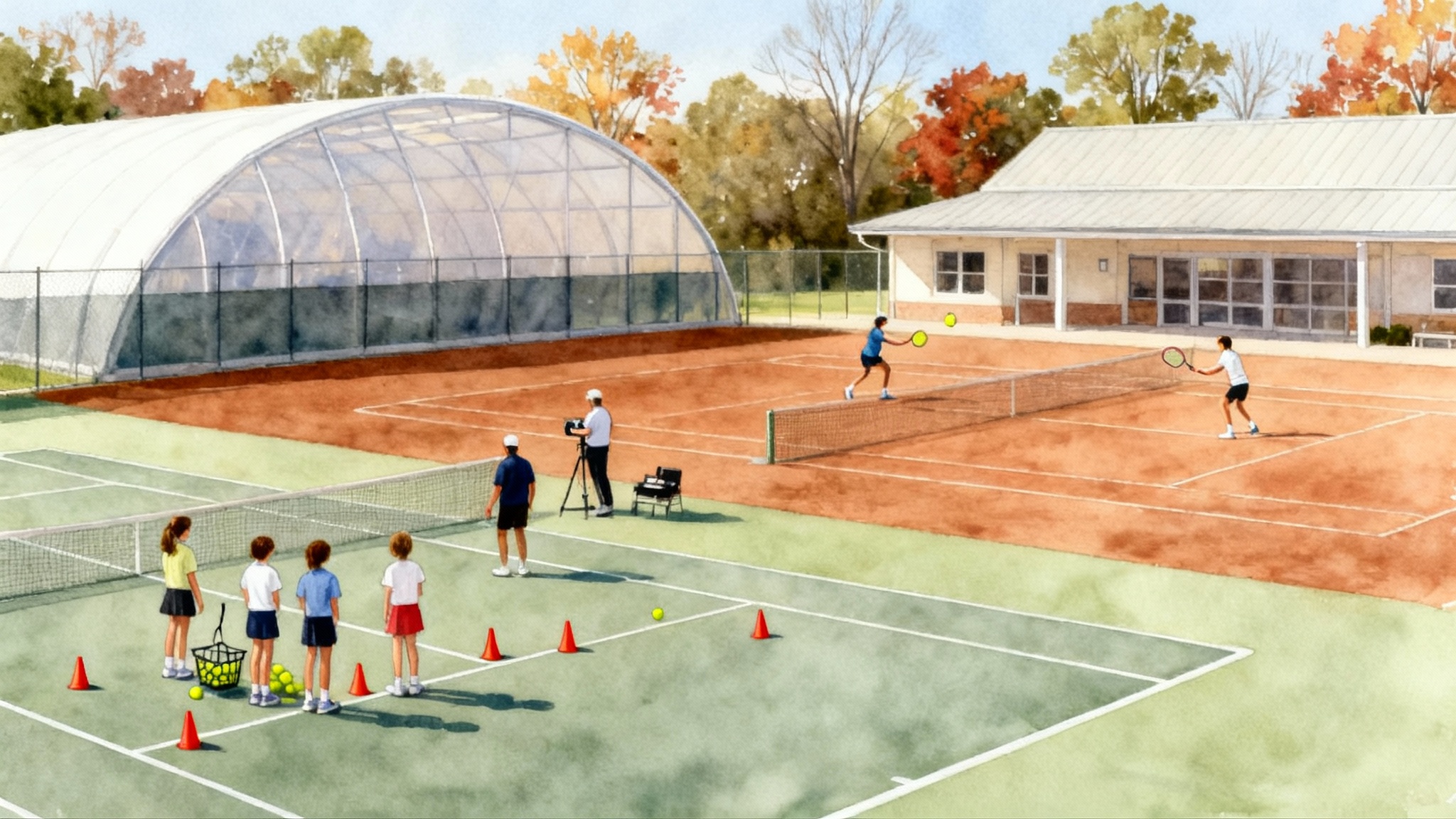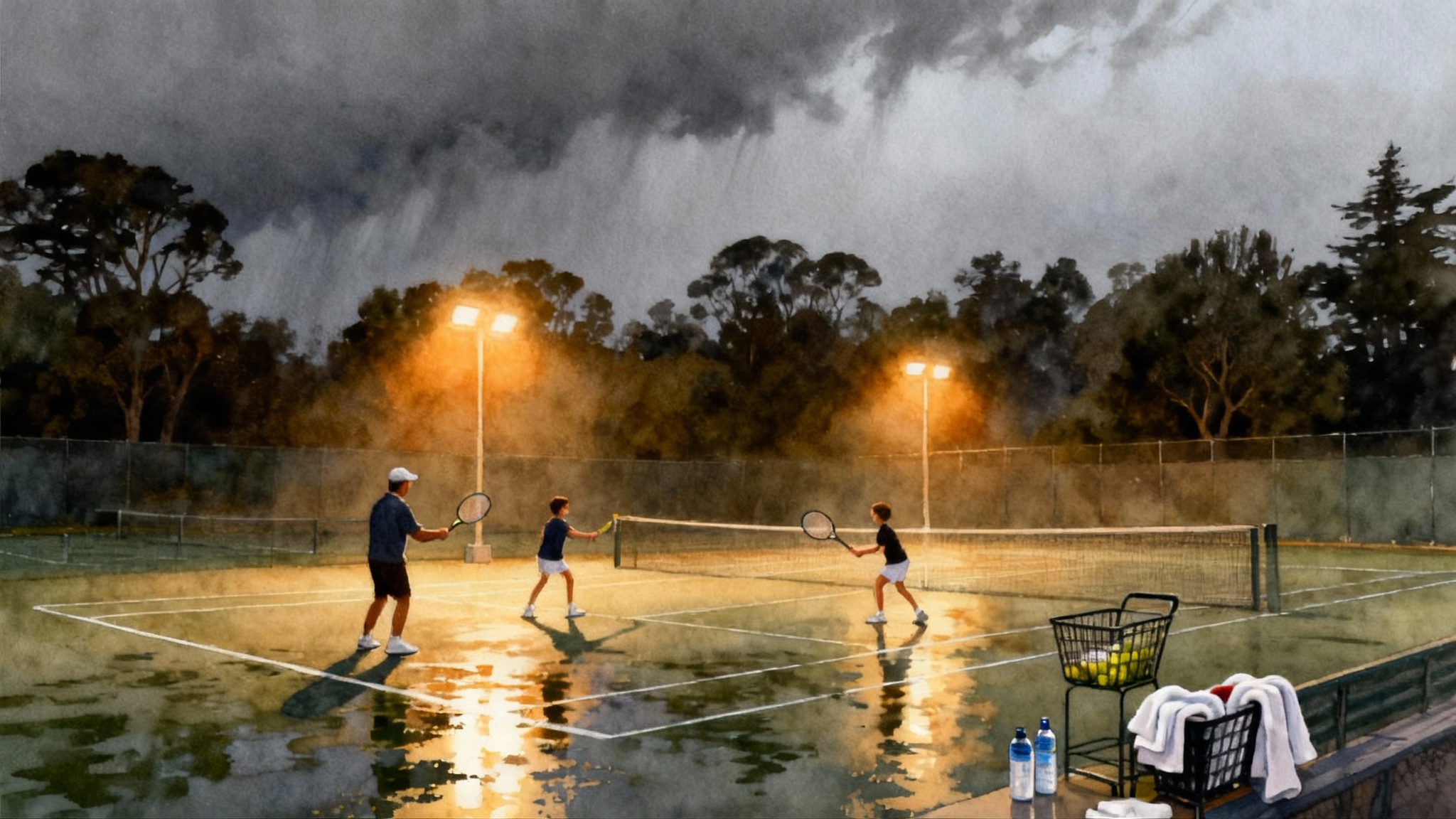Best Florida Tennis Academies for Juniors 2025–2026
A data-backed buyer’s guide to Florida’s top junior tennis hubs. Compare boarding and day models, monthly tuition and hidden fees, court surfaces, training hours, UTR and ITF pathways, academics, housing, safety, and scholarships.
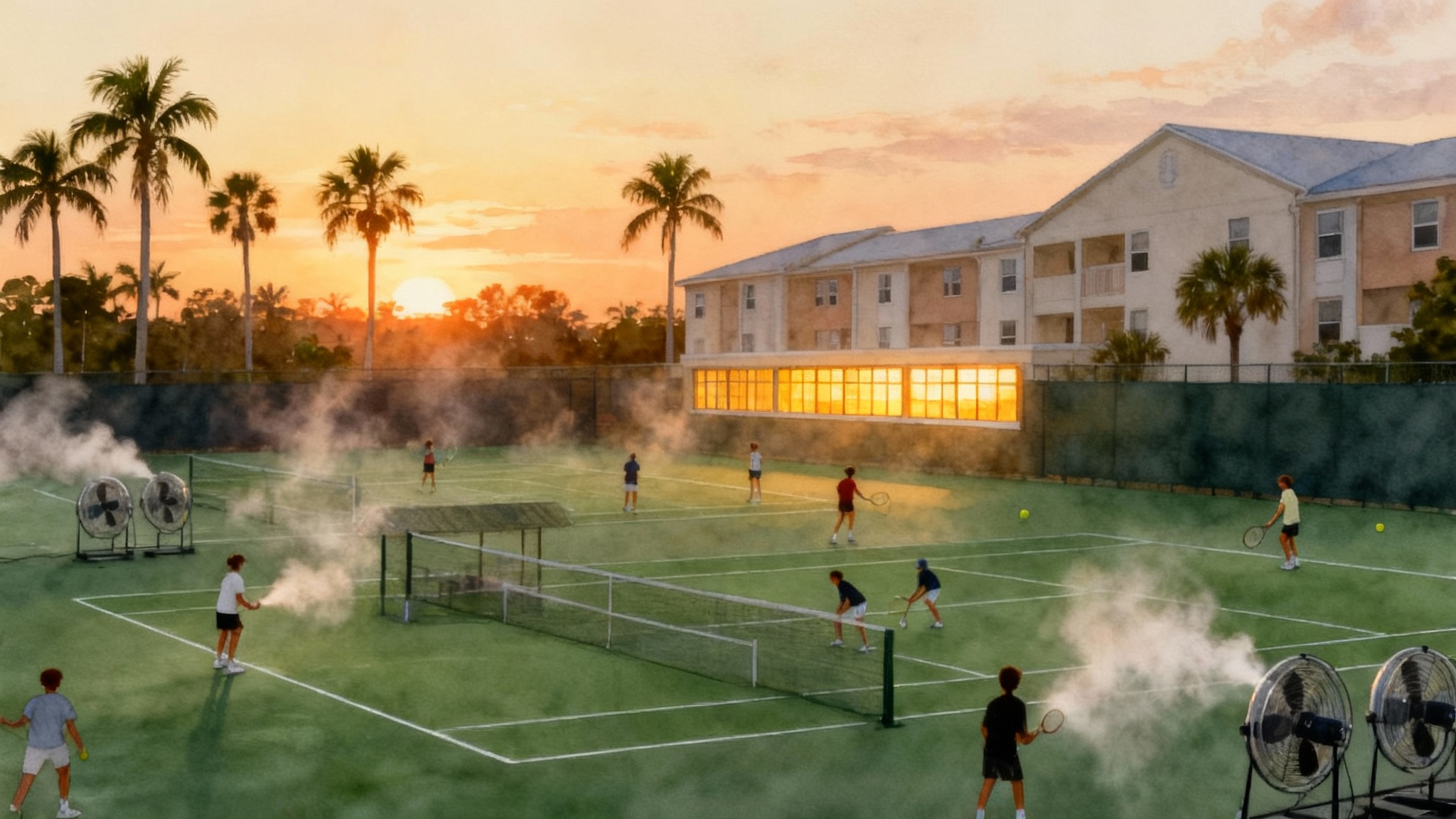
How to use this guide
Florida has more junior tennis firepower than almost anywhere else in the United States. This guide compares the four hubs families ask about most often for 2025–2026: Miami, Orlando, Tampa, and Bradenton. We focus on factors that change outcomes, not brochure adjectives: boarding vs day structure, total cost of ownership, court surfaces, weekly training hours and strength and conditioning, competition pathways, academics and housing, heat and safety protocols, and scholarship or visa options.
If you are comparing regions beyond Florida, see our internal roundups of Southern California academies, Texas tennis academies, and the Spain academies on red clay.
Use the hub snapshots to shortlist locations, the cost and schedule sections to build your monthly plan, and the decision checklists to stress test fit.
Florida hubs at a glance
Below are neutral snapshots of each hub. The academy names are examples you will encounter when touring, not endorsements.
Miami area
- Common academy archetypes: boutique and mid-size performance programs in Miami, Boca Raton, and Fort Lauderdale. Names you hear: Evert Tennis Academy, Rick Macci Academy, Saviano High Performance.
- Surfaces: heavy on green clay plus hard courts. Clay helps develop point construction, patience, and defensive movement.
- Tournament access: frequent USTA junior events across South Florida; drive times can be shorter within the tri-county corridor. ITF juniors stop through seasonally.
- Day vs boarding: strong day-student ecosystem coupled with host-family and dorm options at select programs in the greater area.
- Who it fits: players who want clay reps, families prioritizing strong private-school options, and international students from clay-heavy countries.
Orlando
- Common academy archetypes: large multi-sport campus programs and specialized high-performance teams. The USTA National Campus overview anchors the area with 100-plus courts and frequent events, which makes scheduling and scouting easier.
- Surfaces: ample hard courts with dedicated American clay; indoor options exist at select sites.
- Tournament access: dense calendar of USTA junior levels and adult-pro events; frequent college matches to watch and benchmark.
- Day vs boarding: both available; convenient if you want high tournament volume without long travel.
- Who it fits: tournament-hungry families, players targeting college tennis who benefit from watching Division I competition nearby.
Tampa area
- Common academy archetypes: resort-based academies with boarding and integrated strength and conditioning. Names you hear: Saddlebrook in Wesley Chapel, plus several competitive satellite programs.
- Surfaces: significant American clay inventory and quality hard courts.
- Tournament access: steady USTA schedule in the metro; travel east to Orlando for deeper draws when needed.
- Day vs boarding: balanced; attractive for players who want a closed-campus routine with fewer city distractions.
- Who it fits: clay learners who still need speed on hard, boarding families who want a village-like setup.
Bradenton
- Common academy archetypes: large, internationally known boarding environments with full-time academics. The area is synonymous with IMG; several independent performance outfits operate nearby.
- Surfaces: broad mix of hard and clay, with high practice volume and video tools common.
- Tournament access: USTA and ITF events across the Sarasota–Manatee corridor; travel to Tampa and Orlando when needed.
- Day vs boarding: boarding-first culture with day options for locals.
- Who it fits: players who thrive in big-team energy and want every service under one roof.
What the numbers actually look like in 2025
Sticker price tells only part of the story. Below are typical ranges we see for Florida junior high-performance programs. Actual quotes vary by academy, age group, and level. Use these to build a budget and probe line items during tours.
Monthly tuition ranges
- Day program, high-performance team: 1,800 to 3,500 dollars per month
- Boarding program, full-time: 4,500 to 9,000 dollars per month
- Private lesson add-ons: 120 to 250 dollars per hour for coaches with proven junior-to-college placement records
Common hidden or variable fees
- Tournament coaching and travel: 150 to 300 dollars per day, plus shared expenses
- Strength and conditioning small group: included in premium tiers, or 200 to 500 dollars per month when separate
- Physiotherapy or athletic training: 100 to 200 dollars per session; taping often billed separately
- Racquet stringing: 20 to 40 dollars per job plus strings
- Academic partnerships: online school tuition, books, proctoring fees, and transcript services
- Housing deposits and incidentals: 500 to 2,000 dollars per term; laundry plans and weekend activities may cost extra
- International student services: document handling or advising fees, sometimes 750 to 1,500 dollars per year
A realistic monthly total cost of ownership
- Day family driving from home: 2,400 to 4,800 dollars including tuition, a weekly private, strength and conditioning, stringing, two local tournament days, fuel, and meals
- Boarding student: 5,800 to 10,800 dollars including tuition, housing, meals, strength and conditioning, two private lessons, laundry, two tournament days, and routine care
The spread is wide because coaching seniority, boarding density, and support services differ across hubs. Your job is to match what you pay to the services your player actually uses.
Training load and the week you are buying
A good program shows total training hours up front. Ask for a written weekly plan in 30-minute blocks. Here is what solid programs typically deliver for competitive juniors in Florida.
- On-court training: 20 to 28 hours per week in term time, rising to 24 to 32 hours in summer
- Strength and conditioning: 6 to 10 hours per week including movement, strength, and recovery
- Video and tactical classroom: 1 to 2 hours per week
- Coach-to-player ratio for live ball: 1 to 4 to 1 to 6
- Serve and return reps: at least 45 minutes dedicated twice per week, logged
Quality shows up in how minutes are structured. Look for written practice themes, individualized weekly goals, and objective tests such as timed agility runs, medicine ball throws, or serve speed checks.
Surfaces and why they matter
- Hard courts build first-strike patterns, flatter trajectories, and aggressive return positions. Risk is more load on knees and lower back. Programs should manage jumps and heavy change-of-direction days.
- American green clay slows the ball and rewards point construction, height and shape, and defensive neutralization. Clay fosters patience and transitions.
- Red clay exposure is a plus, not a must. If your player targets European spring ITFs, choose a hub and academy that can secure red clay time for at least 4 to 6 weeks. For deeper clay context, see our Spain academies on red clay.
Miami and Tampa have a larger clay bias; Orlando and Bradenton offer a balanced mix with significant hard-court availability.
Competition pathway: UTR, USTA, and ITF
- USTA Florida offers frequent Junior Circuit and Level 1 to 7 events across all hubs. Orlando’s central location and the density of events at the USTA campus make it simple to string back-to-back weekends without long drives.
- Universal Tennis Rating, or UTR, governs a lot of match planning and college exposure. Read the official explanation of how UTR is calculated so you know why some programs chase specific draws and dual matches.
- ITF juniors: Florida hosts J30, J60, and higher-grade events seasonally. Ask your academy how they plan transitions from USTA to ITF, including the travel budget, coach availability, and school flexibility during swing weeks.
Healthy development means a balance. If every weekend is a tournament, practice quality and recovery suffer. Ask to see a 12-month plan that alternates training blocks with competition clusters and scheduled de-load weeks.
Academics and housing models
Florida gives you three viable schooling pathways. Fit matters more than brand names.
- On-campus private schools integrated with the academy: predictable bell schedules, supervised study hall, and proctoring. Best for boarding students who need structure.
- Online accredited schools with on-site learning labs: flexible for tournament travel; requires self-management. Common brands include programs that offer honors and Advanced Placement. Ask about testing windows and time-zone support for internationals.
- Local public or private day schools: strong for families living nearby; coordinate early release for afternoon training.
Housing options you will encounter:
- Academy dorms: supervision levels vary by age band; ask about staff-to-student ratios and overnight medical protocols.
- Host families: small-household feel; interview the hosts and ask for background checks, transportation logistics, and curfew rules.
- Family apartments: most control, higher cost; useful for short trial terms or younger players.
Key academic and housing questions to ask:
- Who writes semester progress reports that combine academics, training, and competition metrics?
- How are standardized tests scheduled around travel weeks?
- What is the late-evening study hall policy after night training?
- How are roommates matched and re-assigned if needed?
Heat, storms, and safety
Florida tennis is hot, humid, and storm-prone, especially from May to September. Good programs treat safety as a system, not a sign on a fence.
What to verify on tour:
- Wet-bulb or heat index thresholds that trigger schedule changes
- Morning and evening practice blocks on peak-heat days
- On-court shade, misting fans, coolers with ice, and electrolyte plans
- Certified athletic trainer on site during training blocks and tournaments
- Lightning detection and stoppage protocol with restart windows
- Emergency action plans posted courtside and reviewed with staff
If an academy cannot describe heat and lightning protocols in specific steps, move them down your list. For comparisons in other hot markets, skim our Texas tennis academies piece.
Scholarships and international visas
Families do secure help, but rules are specific. Here is the landscape in plain English.
Scholarships and discounts:
- Need-based aid: available at some boarding programs through financial-aid forms and income documentation. Budgets are limited and often awarded early.
- Merit or performance awards: tied to results or verified UTR; often structured as partial tuition discounts or private-lesson credits.
- Team captain or ambassador roles: small reductions in exchange for leadership or mentorship duties.
International visas:
- For full-time boarding study, the I-20 form comes from the academy’s partner school if it is Student and Exchange Visitor Program certified. The academy itself usually cannot issue the document unless it operates an accredited school.
- Expect to document financial capacity, housing, guardianship if under 18, and medical insurance. Lead times of 8 to 12 weeks are common.
- Short-term training on a tourist entry is typical for camps, but not for full-time study. Confirm rules country by country and do not rely on hearsay.
Sample weekly schedules
These are realistic examples that you can compare to the plans you are shown on tour.
Day student week in Miami
- Monday to Friday
- 7:00 to 7:40 a.m. mobility and activation
- 8:00 a.m. to 12:00 p.m. school
- 1:30 to 4:00 p.m. on-court drilling and live ball
- 4:15 to 5:15 p.m. strength and conditioning
- 5:15 to 5:45 p.m. serves and returns logged
- Evening: homework and recovery
- Saturday
- Local USTA match play block or practice sets
- Sunday
- Off or light recovery ride, stretching, and film review
Boarding tournament-prep week in Bradenton
- Monday
- 7:00 a.m. activation and speed work
- 9:00 to 11:30 a.m. patterns and point construction on clay
- 3:00 to 5:00 p.m. live sets on hard
- 5:15 to 5:45 p.m. serves, plus 15-minute return station
- Tuesday
- Strength and conditioning lift focused on posterior chain
- Off-court scouting of likely tournament opponents
- Wednesday
- 120-minute practice match with constraints to rehearse patterns
- Thursday
- Light rhythm hit, mobility, and mental rehearsal session
- Friday to Sunday
- Tournament with coach on site; recovery protocols between matches
Decision checklists
Use these to force clarity before you sign.
Boarding vs day
- Can we afford the full monthly cost of ownership for 12 months, not just tuition?
- Does the program show a written weekly plan and coach-to-player ratios by session?
- Is there a named academic liaison who coordinates teachers, tests, and transcripts?
- Are medical, mental health, and nutrition services visible and accessible?
- Does the dorm or host-family setup fit our athlete’s personality and maturity?
Training quality
- Are there clear practice themes and measurable goals each week?
- Will the same coach see my player three or more times weekly, or does the staff rotate too much?
- How are serves, returns, and transition skills tracked and improved?
- How many verified match play sets are logged per week and reported with notes?
Competition plan
- What mix of USTA, UTR, and ITF events will we play in the next 12 months and why?
- What is the budget for coaching at tournaments and how are costs split?
- How do we adjust school and training loads during multi-week tournament swings?
College placement
- Show me the last three graduating classes with college destinations and scholarship amounts.
- What were the players’ UTRs at commitment time and what roles did they fill on college teams?
- Which college coaches visited the program in the last 18 months and for what purpose?
Safety and care
- What are the heat and lightning stoppage thresholds and who makes the call?
- Where is the emergency action plan posted and when was it last rehearsed?
- Who is the certified athletic trainer and what hours are covered?
Hub-by-hub fit guide
- Miami: choose for clay reps, boutique coaching attention, and deep day-school options. Best for patient builders and families who can drive to training.
- Orlando: choose for tournament density, balanced surfaces, and the ability to watch high-level college tennis regularly. Best for match-volume seekers.
- Tampa: choose for resort-campus rhythm, clay development, and structured boarding. Best for players who focus well in a calmer environment.
- Bradenton: choose for all-in campuses, large peer groups at every level, and comprehensive support. Best for extroverts who thrive in scale.
How to pressure-test a campus visit
Bring this script and write down the answers.
- Show me next week’s schedule for my player’s level, including names of coaches assigned.
- What are your three most common injury patterns and how did you reduce them last year?
- Which two things did you change in your program after reviewing last summer’s outcomes?
- How many new juniors did you add this term and how did you onboard them?
- What percentage of boarders return after their first year and why do the others leave?
- May we observe a live practice and a study hall session before deciding?
Putting it all together
Choosing a Florida academy is like choosing a training ecosystem, not just a coach. Start by picking the hub that matches your tournament plan and learning style. Validate the weekly minutes and support you are actually buying. Match surfaces to your player’s goals. Use the checklists to interrogate safety, academics, and college pathways. If the plan holds up on paper and on a live visit, you have found fit.
Florida’s strength is choice. With a clear budget, a written training week, and a competition calendar you believe in, your player can grow in any of the four hubs. The best academy for 2025–2026 is the one that turns intention into daily, measurable work and delivers the competition reps that matter.
